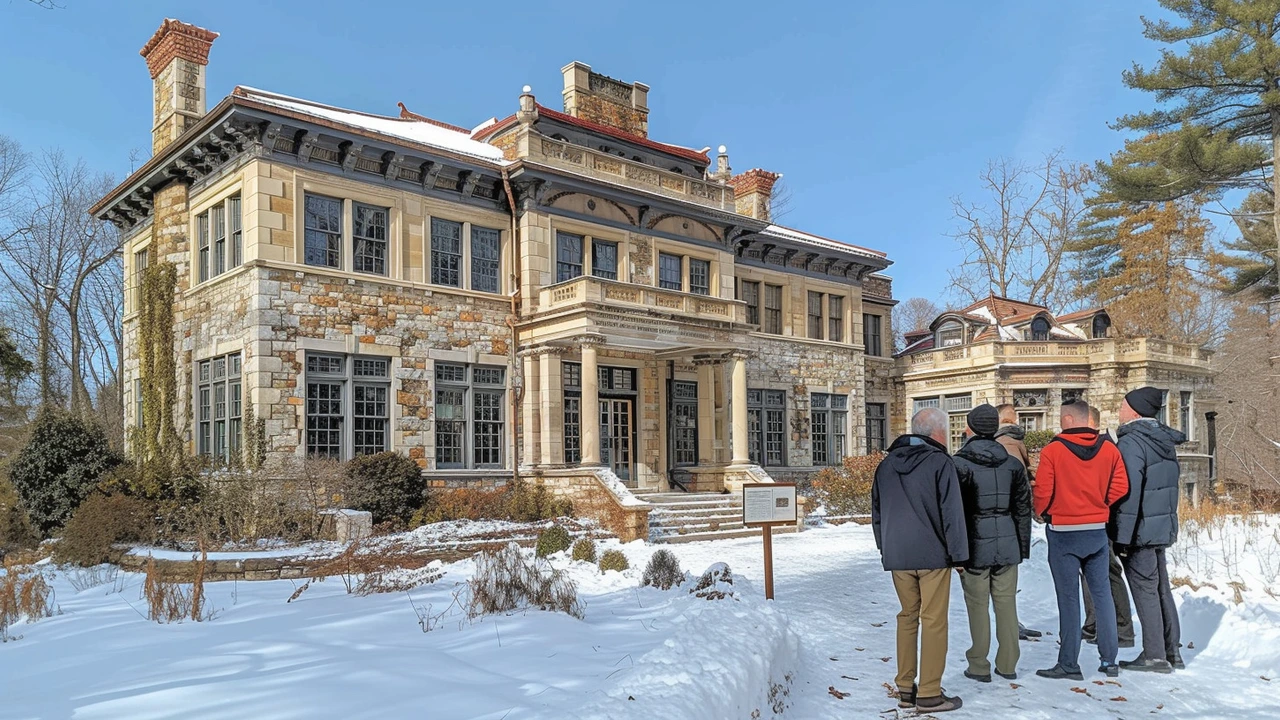Exploring the Origins of Federal Architecture
 Oct, 28 2023
Oct, 28 2023
Unraveling the Early Beginnings of Federal Architecture
Now, I’m no historian, but there's something to be said about the architecture that surrounds ya. Take a stroll down any American city or even my own lovely town here in Ottawa, Canada and the tell-tale signs are there, evident in the brick and mortar of our urban landscape. I bet you’ve seen it - Federal Architecture. Sounds fancy, doesn't it? Let me tell you, it truly is.
The origins of Federal Architecture trace back to the late 18th and early 19th centuries during a period when the newly formed United States was... well, flexing its muscles, if you will. This architectural style, also known as Federalist style, reflects the ideals of a young nation finally stretching its wings. Exciting times, don’t you think?
Observing the details from the eyes of an amateur architecture junkie like me, the Federal Style is characterized by balance and symmetry. It has a certain elegance that I've always found appealing - there's something truly timeless about it. The elegant simplicity, the symmetry, the use of shapes, and the focus on proportion takes me back to the charm of time gone by. It's like a perfectly brewed cup of coffee in the morning, something you would never tire of. And Joanna, my wife, (a fellow architecture enthusiast) often remarks how much the style bears resemblance to our own mini-mansion up here in Ottawa with Benji, our poodle, in tow.
Sailing the Architectural Influences Across the Atlantic
Ah, isn’t it fascinating how ideas hitch rides across oceans on ships? The Federal Architectural style is one of those ideas; it didn't just pop out of thin air. The style was heavily influenced by the European neoclassical designs of the time. In essence, it was the American adaptation of the latest European architectural fad - now that’s one stylish import!
The style sailed across the Atlantic, transferred by architects and designers who had been exposed to European sophistication and borrowed its aesthetics to bring a fresh wave of architectural nuance to American soil. This architectural cross-pollination blended the grandeur of European design with the spirit of a new nation - it was kind of like the creation of a bold new flavor that you can't quite nail down but nonetheless can't get enough of!
The Forefront Figures of Federal Architecture
Can I mention names? You bet I can! The style wouldn’t be here if it wasn't for a few genius folks who spearheaded this elegant architectural movement. Not all heroes wear capes, right? Some wield pencils and sheets of drafting paper. In the case of Federal Architecture, three names stand out - Charles Bulfinch, Samuel McIntire, and, of course, the iconic Robert Adam.
Charles Bulfinch was an American architect who made significant contributions to Federal style. Boston State House, anyone? My history nerd-self sits in awe of the man’s architectural prowess. Samuel McIntire, another key figure, was a self-taught architect and also a master woodcarver. Known as the "architect of Salem," his contribution to federal style is worth mentioning when we talk about its development. Then there's Mr. Robert Adam. This Scottish lad helped define Federal Style’s essence with his neoclassical-motifs-rich designs. If Federal Architecture had a Hall of Fame, these guys would have their statues in the lobby!
The Influence and Evolution of Federal Architecture
Good things tend to stick around, and Federal style is no exception. Today, the influence of the Federal Style is apparent in the countless public buildings decked in brick and mortar and KG of rich history. Buildings like the U.S Capitol and the White House are well-known examples of Federal style, with their balanced facades, domes, and columned porticos. It continued its legacy, subtly changing and evolving, influencing various architectural movements later.
Contruction-ville has never been static, right? And so, Federal Architecture began too, to transform over time, transitioning into what is known as Greek Revival architecture, incorporating more Greek design elements into the mix. Talk about one stylish evolution! This progression speaks volumes about the dynamism and transformative potential of architecture - it's akin to a silent, evolving dialogue shaped by history, culture, and human ingenuity, all sketched out in lines and angles on the canvas of our cities. Now that's something to marvel at!
By the way, here’s a little nugget from my journey: A while back, Joanna and I toured Washington D.C., soaking up the beautiful Federal Architecture lining the city's streets. A particular happening had Joanna laughing for a good few minutes. You see, I, in my enthusiasm tried to mimic the balanced facades of the buildings around - arms outstretched and standing on one foot in front of the Capitol building. Wouldn't you know it, I lost balance and ended up sprawled on the grass, dignity left far behind! Well, Benji had a good run that day, chasing a squirrel around, so all’s well that ends well, right?!
In conclusion, we’ve only scratched the surface of the rich and profound world of Federal Architecture. There's more to it than bricks, mortar, and fancy design prints. Beneath all that surface charm, it represents a unique period in history, the optimism of a new nation, and the fusion of international influences. Makes you look at those good ol' buildings in a new light, doesn't it?
So next time you walk those city roads on a quiet evening, take a moment. Stop and look. Behind those austere facades and grandiose structures, there lies a tale steeped in history, culture, and human imagination; a dance of artistry rendered in brick and stone. For someone like me and my better half Joanna, exploring these elements and understanding the behind-the-scenes is just as enjoyable as a sunny afternoon spent in the company of our lively poodle Benji. So here's to architecture - the silent narrator of our past, present, and future. Cheers!